Butterley-Langley Mill Railway (3#3)
Butterley-Langley Mill Railway (3#3)
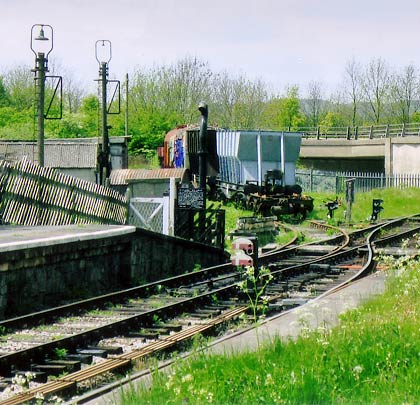
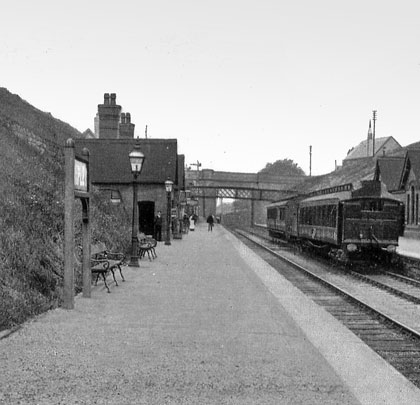
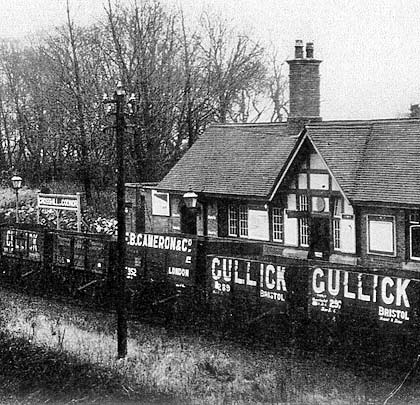
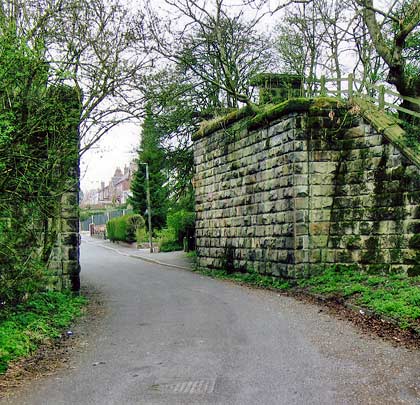
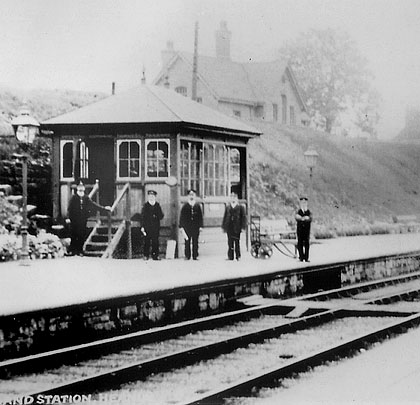
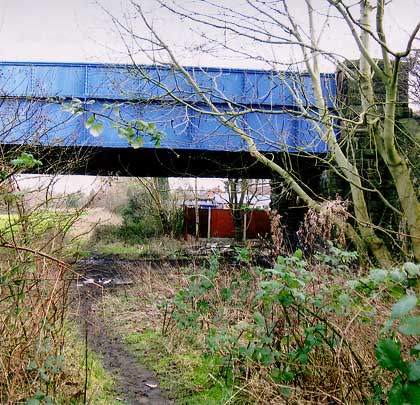
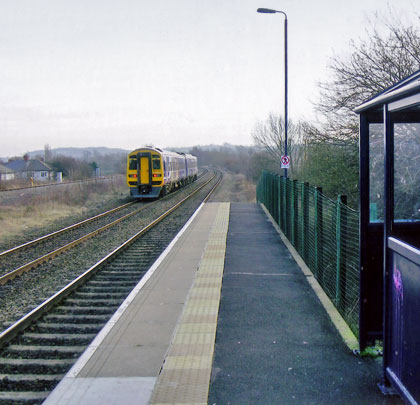







From October 1895, when the branch was operational in its entirety, the Midland Railway had operated a service of nine trains in each direction along the line, with additional services running on Saturday lunchtimes and evenings.
Throughout the late Victorian and during the Edwardian period, the road between Ripley and Heanor had seen a substantial amount of ribbon development over much of its length. Initially some of this would have been initiated by the arrival of the railway and it is ironic that this would lead to the first of the two developments that lead to the railway’s demise.
The increasing population along the road made it ideal for the construction of a tramway and in 1903 the Nottinghamshire & Derbyshire Tramway Company was formed. It had initially proposed a route of some 95 miles with no fewer than five tram sheds and 316 passing loops, linking a wide area of villages and townships in east Derbyshire and west Nottinghamshire. Fierce opposition, in particular from the Midland Railway, saw the proposed mileage reduced firstly to 79 miles, then 47 miles, and finally 15 miles. The tramway was to own the 11¾ from Ripley to Cinderhill. It then leased 1.36 miles from Nottingham Corporation Tramways between Cinderhill and Basford and had running powers over a further 2.3 miles of corporation tracks from Basford to the centre of Nottingham.
The tramway was opened in sections, with the first being that between Crosshill and Cinderhill on 29th July 1913. By 15th January 1914, it was operational throughout. Although a decade had elapsed between the authorisation of the Nottinghamshire & Derbyshire Tramway Act and its eventual opening, the Midland Railway appears to have done little if any damage limitation despite being resigned to the fact that much of its local traffic between Butterley and Langley Mill would be lost.
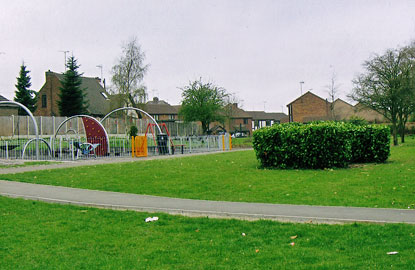
Photo: Simon Swain
When rail travel was the only realistic means of travelling any reasonable distance, the fact that a railway station was located sometimes two or three miles from the place it pertained to serve did not pose a problem to people who would not think it unusual to travel this distance on foot. Trams suddenly provided unprecedented access, allowing greater local movement. Not only could the railway not compete on this level but neither could it offer the same frequency of service or competitive fares.
The tramway timetables show a half-hour frequency between Ripley and Nottingham, with the first car leaving Ripley at 5:55am on weekdays and the last departure being 9:15pm. On Saturdays a similar service was operated, however between 1:45-5:00pm and 5:00-9:24pm cars ran at 15 and 12 minute intervals respectively. There was a quarter-hourly service on Sundays from 11:15am until 8:15pm. Comparison with the October 1914 timetable for the Butterley-Langley Mill branch shows the first departure from Ripley towards Langley Mill at 8:33am, then operating at approximately two-hourly intervals until the last departure at 8:28pm. It is easy to understand then the instant popularity in the tramcar. This combined with the fact that there were over 230 stops between Ripley and Nottingham – allowing passengers to disembark closer to their destinations – meant that the railway was always going to be at a serious disadvantage.
The final point to consider is the competitive fares that tramways offered passengers, set at a penny a mile with reductions if riders travelled over a number of sections. An 11d ticket ensured a ride from Ripley to Basford, with an 11½d ticket allowing a journey over the entire route. Colliers were able to travel to and from their pits for a penny regardless of journey length whilst workers travelling before 8am could buy return tickets for the price of singles.
The railways had no chance of responding to the threat posed by tramways before the second crisis befell it. On 4th August 1914 Britain entered the First World War and, with immediate effect, the railways came under direct government control.
The ensuing months saw a gradual reduction in passenger services across the country. However the Butterley-Langley Mill line seems to have retained its previous level of service. A look at the summer timetable of 1915 shows that, in the Down direction, there were three trains from Pye Bridge to Langley Mill via Butterley, three between Butterley and Langley Mill and a further two from Ambergate to Langley Mill. These services included the 9:40am Mansfield to Langley Mill as well as 1:15pm and 3:30pm Ambergate to Langley Mill services. The Up service was simpler with five trains running between Langley Mill and Pye Bridge via Butterley and three from Langley Mill to Ambergate. The 9:13pm Saturdays-excepted service ran from Langley Mill through to Mansfield whilst the 9:09pm Saturdays-only went through to Ambergate.
By 1916 the war had tightened its grip and further economies in services and staffing occurred. Between Butterley and Langley Mill the service was reduced to seven trains in each direction and, in an attempt to economise (with the exception of Saturdays), the last train of the day in each direction no longer called at Crosshill & Codnor. Around the same time, staffing reductions meant that one station master was shared between Heanor and Crosshill & Codnor stations.
As the need to make economies became increasingly prevalent, the Midland announced that, with effect from 1st January 1917, services between Ripley and Langley Mill would be suspended. And so at 9:09pm on Saturday 30th December 1916, the last train for more than three years departed Langley Mill for Butterley. Trains between Ripley and Butterley were reduced to just four daily in each direction, and suspended altogether from 1st October 1917.
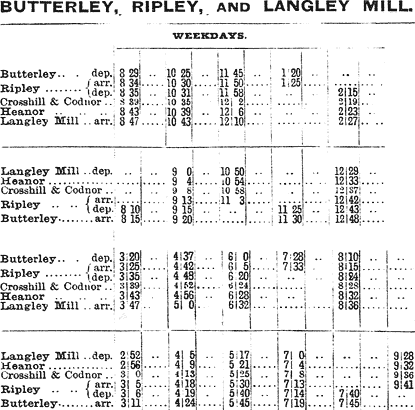
(Timetable courtesy of the Midland Railway Society)
Following the cessation of hostilities, Butterley to Langley Mill services were reintroduced on 3rd May 1920, with seven trains in each direction. However, during the three-year suspension developments in public transport had occurred which had seen the emergence of a number of local motor bus operators. Combined with the tramcars, these meant that most of the pre-suspension passenger traffic had now been lost. A further blow to the railway came in August 1920 when the Trent Motor Traction company began operating buses between Heanor and Derby. This enabled passengers to travel directly between the two towns – something that was not possible by rail. The trams also provided a direct link to Nottingham – by rail, a change of trains was required. Therefore it is difficult to see what the Midland Railway believed it could gain by a continuation of services along the branch.
In 1921 the Railways Act brought the country’s 300+ railway companies together to form ‘the big four’ – the Great Western, Southern, London & North Eastern and London Midland & Scottish. The Midland Railway was absorbed into the latter. The LMS seems to have made one final effort to improve passenger patronage by increasing services along the branch to pre-tramway levels of nine daily trains in each direction. Additional trains ran on Wednesdays and Saturdays, as well as later into the evenings. To compete with buses and trams, many services were speeded up for quicker journey times. Between 20th February and 23rd March 1925, the service was operated by a Sentinel steam railcar. These were manufactured by the Sentinel Company of Shrewsbury in August 1924, with orders being placed by both the LMS and LNER. They could accommodate up to 52 passengers with luggage and were intended to replace locomotive-hauled services on low-to-medium density routes. The LMS chose the Butterley-Langley Mill branch for trials of the vehicles.
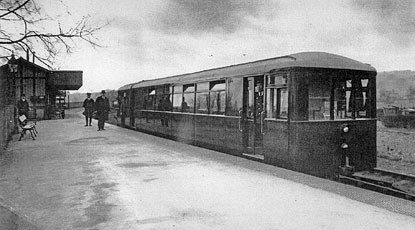
Photo: Mr B Key
It was not the first time that the branch lines of Derbyshire had been used to run steam carriages. In 1906 the Midland Railway had introduced a motor train service on the Derby to Ripley, Derby to Wirksworth and Derby to Melbourne lines. These trains comprised of Hudswell-Clarke 4-4-0T locomotives and an old Pullman coach.
Unfortunately the steam railcar trials and competitive services came at a time when the country was in a state of recession and general unrest. At midnight on 3rd May 1926 railwaymen joined the general strike and, as a result, services between Butterley and Langley Mill were suspended with effect from 4th May 1926. When the strike was brought to an end, rail services were reintroduced on many routes; however, those between Ripley and Langley Mill were not. Yet despite this, the suspension was still deemed to be temporary.
Permanent closure was announced in October 1928, by which time the line had been badly affected by mining subsidence. Even with speed restrictions it is difficult to see how services could have been maintained. Almost 2½ years had passed between the suspension of trains and the formal announcement of permanent closure but, in reality, the line could have been regarded as closed since 17th November 1926. On this date the rails to the west of Heanor were severed, preventing through running. Between then and 2nd April 1928 when the rails were lifted from Heanor to 400 yards east of Crosshill & Codnor Station, the line from Ripley Junction was used for the storage of empty mineral wagons. Furthermore on 6th August 1928, the signal box at Ripley Junction was closed and the branch connection severed – authority for this having been given on 19th December 1927. Finally on 3rd September 1928, the Ripley Junction to Heanor section was taken out of use and the spur into the branch platform at Langley Mill severed at its junction with the Heanor goods line.
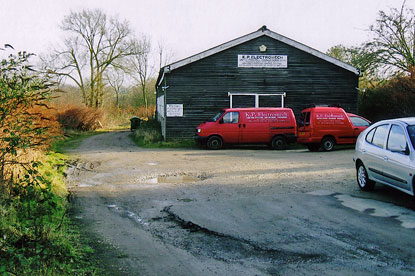
Photo: Simon Swain
For a further 12 months after October 1928 the line remained in situ. The once meticulously-kept permanent way was further ravaged by the effects of mining subsidence and increasingly the line took on an atmosphere of desolation and dereliction. Nowhere more was this seen than at Crosshill & Codnor Station where the name and timetable boards remained long after the last passenger train called. The once-pristine gardens, where only 20 years earlier station staff had posed for photographs by the immaculately kept flowerbeds, became an overgrown wilderness; the track, which now came from and went to nowhere, were derelict and covered in weeds. The station would no longer echo to the sounds of Johnson 0-6-0s as they laboured up the 1:66 gradient from Heanor; instead, the only sound resonating around the station buildings would be the distant clanging of the tramcar bell which had sounded the death knell for both the station and the line.
The situation may have remained the same had it not been for an LMS board meeting held in Derby on 19th January 1930 when authority was given for the removal of the permanent way, bridge structures and other works, with the exception of the station buildings at Heanor and Crosshill & Codnor which were to be converted into dwellings. Dismantling of the line was swift, however a number of bridges remained until relatively recently.
Services between Ripley and Butterley had been reintroduced after the general strike had ended. However on 25th November 1929, the Chief Superintendent at Derby reported that the line between Butterley Junction and Ripley Station was “not safe for traffic” and instructions were given that trains were no longer to run over the line. Services between Butterley and Ripley were permanently withdrawn on 1st June 1930, together with trains between Ripley and Derby.
The eastern end of the branch fared only slightly better and economies were soon being made. On 17th December 1930 an LMS committee proposed the closure of Heanor Goods Junction signal box. Following the closure of the Bailey Brook colliery branch on 23rd August 1931, the junction and box immediately became superfluous, with the latter being dismantled on 23rd November 1932. The committee’s minutes note that its removal would result in an annual saving of £298 in signalmen’s wages and a further £41 in general repairs and maintenance.
On 9th May that year, the Up loop at Heanor Station had been taken out. The effect of this was to create a single branch of a little over a mile in length, running from Heanor Junction on the Erewash Valley main line to Heanor Station yard where the connections were retained to serve the sidings and goods shed. The line towards Ripley extended a little further westward before terminating at a set of bufferstops just beyond the bridge at Longbridge Lane, Loscoe. For a further 20 years, this short section of railway – the last remnants of the Butterley to Langley Mill line – soldiered on, handling the small amount of traffic generated within the goods yard at Heanor and forwardings of coal from the adjacent collieries.
Upon nationalisation on 1st January 1948, British Railways swiftly set about the task of dispensing of those parts of the railway network which were no longer financially viable. The years following the Second World War had seen the railways lose a lot of traffic to road competition and the National Coal Board, upon whom the short branch to Heanor heavily relied for most of its traffic, was quick to adopt this method of transportation.
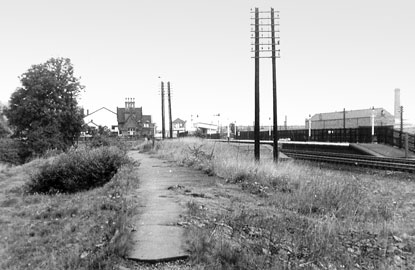
Photo: Mr B Key
The coal crisis of 1947 had finally killed off the passenger service between Ambergate and Pye Bridge, and Butterley Station was closed to passenger traffic on 16th June 1947. On 1st July 1950 BR renamed the former Midland Railway station at Heanor, Heanor North, but the new title did not lead to a revival in fortunes and traffic continued to dwindle. It therefore came as no surprise when British Railways announced the closure of the line with effect from 1st September 1951, bringing to its end a line that had been operational for just 61 years.
© Simon Swain 2011





